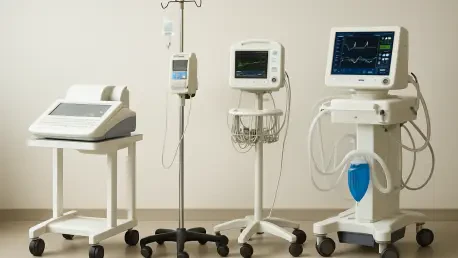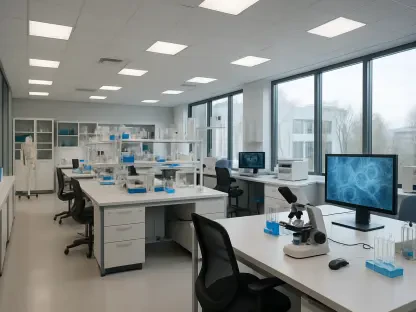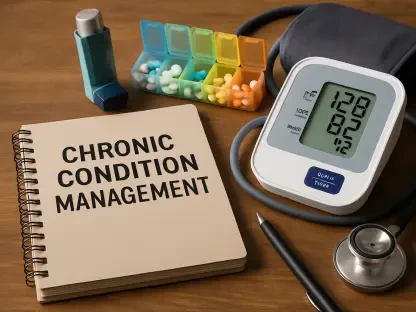In an era where technology is advancing at an unprecedented pace, healthcare hardware stands as a cornerstone of transformation in medicine during 2025, redefining how care is delivered and experienced. From wearable devices that monitor vital signs in real time to robotic systems that enhance surgical precision, these innovations are not just tools but catalysts for a profound shift in the medical landscape. Hospitals and clinics are evolving into interconnected ecosystems where data flows seamlessly, enabling faster diagnoses, personalized treatments, and proactive health management. This evolution is breaking down barriers between patients and providers, fostering an environment where prevention often takes precedence over reaction. As hardware continues to integrate with cutting-edge software and connectivity solutions, the potential to save lives and improve quality of care grows exponentially. This article explores the pivotal role of healthcare hardware, delving into key areas where technology is making an indelible impact on modern medicine.
Harnessing Connectivity Through IoT in Healthcare
The integration of the Internet of Things (IoT) into healthcare hardware marks a significant leap forward in 2025, creating a network of devices that communicate vital data instantly. IoT-enabled tools, such as smart sensors and monitors, are embedded in hospital systems and patient environments, collecting real-time information on everything from heart rates to medication adherence. This connectivity allows medical professionals to respond swiftly to changes in a patient’s condition, reducing the risk of complications and enhancing care quality. With the IoT healthcare market poised for remarkable growth from 2025 to 2035, its influence is undeniable, shaping a landscape where decisions are data-driven and immediate. The ability to link disparate systems into a cohesive digital framework means that even remote patients can receive timely interventions, bridging geographical gaps and ensuring that healthcare is more accessible than ever before.
Beyond patient monitoring, IoT hardware is revolutionizing administrative efficiency within healthcare facilities by streamlining workflows and resource allocation. In bustling hospital settings, connected devices track equipment availability, manage inventory, and even coordinate staff schedules, minimizing downtime and operational bottlenecks. This seamless integration reduces human error, ensuring that critical tools and personnel are always where they’re needed most. As a result, healthcare providers can focus more on patient care rather than logistical challenges. The expansive reach of IoT also extends to telemedicine, where hardware facilitates virtual consultations with the same depth of data as in-person visits. This transformation underscores a broader trend: technology is not just supporting medicine but fundamentally reshaping its delivery, making it more responsive and interconnected across all levels of operation.
Empowering Patients with Wearable Technology
Wearable medical devices have become indispensable by 2025, shifting the paradigm of health management from clinical settings to the hands of individuals. These sophisticated gadgets, far beyond simple step counters, now track critical health metrics such as blood glucose levels, blood pressure, and even oxygen saturation with remarkable accuracy. For those managing chronic conditions like diabetes or hypertension, wearables provide continuous surveillance, alerting users and their doctors to potential issues before they escalate into emergencies. The empowerment derived from having such detailed insights fosters a proactive approach to health, encouraging lifestyle adjustments and timely medical consultations. As the market for these devices surges, their accessibility and functionality continue to expand, reaching diverse populations and addressing a wide array of health needs with ease.
The role of artificial intelligence in wearable technology further amplifies its impact, as these devices now incorporate predictive analytics to foresee health risks. By analyzing patterns in collected data, AI algorithms can warn of impending issues, such as irregular heart rhythms that might indicate a serious condition. This predictive capability transforms wearables into more than monitoring tools; they become partners in prevention, guiding users toward better health outcomes. Additionally, integration with mobile apps and healthcare systems ensures that data is shared seamlessly with medical teams, creating a collaborative care model. This synergy between hardware and software not only enhances individual well-being but also alleviates pressure on healthcare facilities by reducing unnecessary visits, highlighting how technology empowers patients to take charge while supporting systemic efficiency.
Advancing Precision in Surgical and Diagnostic Tools
In clinical environments, healthcare hardware is redefining precision through advanced surgical and diagnostic tools by 2025, with robotic systems leading the charge. These machines, equipped with high-definition imaging and finely tuned mechanical controls, assist surgeons in performing intricate procedures with minimal invasiveness. The result is reduced recovery times and improved outcomes for patients undergoing everything from heart surgeries to orthopedic repairs. Moreover, smart instruments embedded with sensors provide real-time feedback during operations, allowing for adjustments on the fly and ensuring greater accuracy. This convergence of hardware and intelligent technology elevates the standard of care, turning operating rooms into hubs of innovation where human skill is augmented by mechanical precision.
Diagnostic hardware, too, is undergoing a remarkable evolution, driven by advanced sensors and machine learning capabilities that enhance early detection of diseases. Tools that analyze imaging scans or blood tests can now identify subtle anomalies that might be missed by the human eye, facilitating earlier interventions for conditions like cancer or neurological disorders. This precision in diagnostics not only saves lives but also reduces the burden of late-stage treatments on both patients and healthcare systems. The integration of such hardware into routine medical practice ensures that diagnoses are not just faster but also more reliable, paving the way for tailored treatment plans. As these technologies become more widespread, they promise to redefine clinical standards, making accuracy a cornerstone of modern medical practice across diverse specialties.
Optimizing Safety and Efficiency with RFID Solutions
Healthcare hardware is also making strides in operational safety and efficiency through solutions like RFID wristbands, which have become integral by 2025. These devices ensure accurate patient identification, linking individuals to their medical records and treatment plans with a simple scan, thereby minimizing errors in medication administration or procedural mix-ups. Beyond patient care, RFID technology extends to tracking hospital assets, from surgical tools to medication stocks, ensuring that resources are used optimally and nothing goes missing in critical moments. This level of organization is vital in high-pressure environments where every second counts, and it significantly enhances the safety protocols that protect both patients and staff from preventable mistakes.
The broader impact of RFID and similar hardware lies in its ability to integrate with hospital information systems, creating a unified platform for data management. Real-time tracking of patients and resources allows administrators to allocate staff and equipment more effectively, reducing wait times and improving overall service delivery. This efficiency is particularly crucial as healthcare facilities face increasing patient volumes and complex care demands. By automating routine tasks and providing instant access to critical information, RFID solutions free up valuable time for medical professionals to focus on direct patient interaction. This technology exemplifies how hardware innovations extend beyond clinical applications, addressing systemic challenges and fostering a more secure, streamlined healthcare environment that benefits all stakeholders.
Reflecting on a Hardware-Driven Medical Evolution
Looking back, the journey of healthcare hardware by 2025 reveals a remarkable transformation in how medicine is practiced and experienced. Connectivity through IoT reshaped data access, wearable devices empowered patients with unprecedented control, surgical tools elevated precision, and RFID solutions enhanced safety and efficiency. These advancements collectively shifted the focus toward proactive care, where prevention and personalization became achievable goals. As the dust settled on this era of rapid innovation, the next steps involved addressing lingering challenges like cybersecurity to protect sensitive data. Investing in robust security measures and fostering collaboration between tech developers and healthcare providers emerged as critical priorities. Moreover, scaling these technologies to underserved regions promises to bridge equity gaps, ensuring that the benefits of hardware innovations reach every corner of society, setting a foundation for an even more inclusive future in medicine.









